In discussion after discussion about what talent is or isn’t, most people get frustrated by the lack of evidence to explain it, that no one has found the signature DNA combination that points directly to a biological giftedness for specific skills. Most people throw up their hands and argue that a person just can’t be a great artist unless they have some sort of abnormal ambition, a driving force, at least that certain something. It’s gotta be passion that pushes the creative to do great things, they say, and that can only come naturally. Something they’re born with.
Fortunately now, the scientific research studies show a much more accurate picture of how talent is built, not born. Researchers such as Anders Ericsson, Carol Dweck, Robert W. Weisberg, Mihaly Csikszentmihalyi, and a growing list of others are leading the way to demystifying the myth of talent. That any set of skills to attain mastery of a subject, especially in the creative fields of music, theater, writing, and painting can and are being taught. Fact is, passion can be taught.
Turns out, passion is contagious.
Hotbeds
In small, focused training sites around the world from sports to music and art, students are discovering how even a subtle interest in their chosen endeavor can be expanded to a driving passion by exposure to intense training and ambitious colleagues. They’re called talent hotbeds, and the results from this training is remarkable.
One of many books that collates multiple studies of performance and training, The Genius in All of Us: New Insights into Genetics, Talent, and IQ, the author, David Shenk explains quite succinctly, “In any competitive arena, the single best way to inspire better performance is to be surrounded by the fiercest possible competitors and a culture of extreme excellence. Success begets success.”
Luckily, I had an instructor in my junior year at art school, a working illustrator, that told me, “no matter where you go, don’t be the best guy there.” His words came back to me when I applied for my first job out of school. I couldn’t know it at the time, but I’d stumbled onto a small hotbed of illustrators in Waterloo, Iowa, where six artists drove each other to do astonishingly good work. I dropped into that environment as the seventh illustrator, untrained, unaccomplished, and scared spitless. I had to compete on their level quickly or lose the job. That was my actual art education. Everyday for two years provided some new realization about being an illustrator. (Incidentally, Gary Kelley, the head of the department, emerged from that concentrated pool of artists.)
Currently, I’m involved in another hotbed, The Illustration Master Class, that has attracted a concentration of eager students, both professional and amateur, for over 10 years and is constantly growing. Attendees are surrounded by people with similar interests and near identical goals. They come from all over the world seeking information to build a career in illustration, galleries, gaming, etc.
Attendees’ drives are changed by the sheer concentration of topics and practical methods. Within one intense week, I’ve watched them drive each other, help each other reach as high as they can. The contagion starts with small successes that permit others to feel they, too, can reach for more. They learn quickly to not wait for a miracle that lands on them and showers them with the ‘gift’ they thought they craved.
There are scores of hotbeds developing across the globe, easily witnessed in sports performance. But there are also acting troupes, music camps, writing and art retreats, all extremely focused on making the small steps that become major experiences and lead to specific skills.
Ignition
We are not superheroes. We’re not from Krypton, bitten by spiders, or descended from Valhalla. Yet nearly all of our normal story heroes became that way through adversity. We love that. We want to watch our heroes make the necessary steps to succeed, to overcome their worst fears because there’s something of us in all of them. We love to watch them fire their needs, ignite their passion to succeed, and we absolutely abhor a story when the achievements come too easily. That’s just bad storytelling.
Likewise, artists have their own stories to develop, their own struggles to conquer. We are not born with the fire, no matter what society may think we have. Like any endeavor, the fire builds as we go.
Daniel Coyle, author of The Talent Code, calls it ignition. That initial spark that sets us on a path, fires our imagination. In his fascinating book, Coyle describes how ignition is connected to experiences in our early lives, and can be stimulated by any environmental input that connects with a desire for future belonging. We constantly respond to signals from the environment, and those signals may arrive as visuals, of say, a successful artist:
“…each has to do with identity and groups, and the links that form between them. Each signal is the motivational equivalent of a flashing red light: those people over there are doing something terrifically worthwhile. Each signal, in short, is about future belonging. Future belonging is a primal cue: a simple, direct signal that activates our built-in motivational triggers, funneling our energy and attention toward a goal.”
Often, losing a parent at an early age may have significant effect. “Losing a parent at a young age was not what gave them talent; rather, it was the primal cue—you are not safe—that, by tripping the ancient self-preserving evolutionary switch, provided energy for their efforts, so that they built their various talents over the course of years, step by step…”
Ignition can come from so far back in our personal histories that we may not even be able to recognize its source. David Shenk: “… intense ambition evolves out of complex, real-world dynamics, settling into people’s psyches at different ages and circumstances—sometimes from extreme adversity, sometimes as a proxy for revenge, sometimes as a way of proving oneself to a beloved/feared parent or sibling, and so on. The collection of potential catalysts for intense ambition may never be entirely understood and will surely never be easily reproducible. But that doesn’t mean we shouldn’t try to understand the mechanism better, or apply its lessons.”
Prodigies
It’s so easy to be pulled into thinking the way most of the general public thinks about early aptitude or fascinating skills. The attitude is that there couldn’t possibly have been enough time for a young prodigy in any creative field as art, music, theater, or writing to be able to develop so accurately and so soon. It’s important to remember, as David Shenk says, “studies have now shown conclusively that mind-set, nutrition, parenting, peers, media culture, time, focus, and motivation all profoundly affect the development of abilities. All of these factors are in play from the first day of a child’s life (or earlier).”
I don’t know any working artist that hasn’t experienced doubt at some point about their skills as a painter. Most of it stems from our maturation in a society that constantly drives the idea that “one either has it, or they don’t,” consistently singing the praises of a ‘talent’ or ‘genius.’ But many studies show that children who show early promise do not necessarily continue into adulthood with that same promise. As psychologist Ellen Winner explains, “Technical perfection wins the prodigy adoration, but if the prodigy does not eventually go beyond this, he or she sinks into oblivion.”
Artists do not learn their skills at the same rate. This person understands perspective, and that one has a good sense for line, while that one works accurately with shape. It is an evolutionary process that’s different for each trainee. Developing professional skills of painting, for example, takes time, focus, and a driving need to delay gratification. The process of building a skillset needed to produce visual works consistently and on-schedule for a longstanding career takes dedication.
There’s much adversity to achieving the results we strive for. As Daniel Coyle puts it, “One forgoes comfort now in order to work toward some bigger prospective benefit later on. It’s not as simple as saying I want X. It’s saying something far more complicated: I want X later, so I better do Y like crazy right now. We speak of motivation as if it’s a rational assessment of cause and effect, but in fact it’s closer to a bet, and a highly uncertain one at that.”
___________
Over the past ten to fifteen years I’ve been privately approached many times by students and professionals asking whether I think it’s possible for a mature adult to gain the kind of career they’d always hoped for. They worry that they’ve missed some kind of window to be a great painter, designer, illustrator. It’s not just young or old asking the question either. They range in age from 20’s to 60’s.
My answer is always to ask how much they want it. Even just this response inspires most of them to get focused and start training. They’ve already thought long and hard about it anyway. You know yourself how your own story of ignition spurred you to start drawing or continue on to art school and after. I’ve had to reassess and reevaluate my path several times throughout my career. I suspect I’m coming up to another reassessment, too. Just so you know: that’s part of the process of achievement.
Developing an abiding passion is part of that process. Deep inside, we know what we want, but we need to find out how to get it. Most of us just want the permission to try.
I keep in mind how David Shenk ends his amazing book. “Everything we know about epigenetics so far fits perfectly with the dynamic systems model of human ability. Genes do not dictate what we are to become, but instead are actors in a dynamic process. Genetic expression is modulated by outside forces. “Inheritance” comes in many different forms: we inherit stable genes, but also alterable epigenes; we inherit languages, ideas, attitudes, but can also change them. We inherit an ecosystem, but can also change it. Everything shapes us and everything can be shaped by us. The genius in all of us is our built-in ability to improve ourselves and our world.”
Passion is built. Passion is contagious. Passion grows through connection to other passionate trainees. And it lasts a long time. I’m reminded of the aging artist Bernini who would say to his apprentices as they pleaded with him to take breaks, “Leave me alone, for I am in love!”


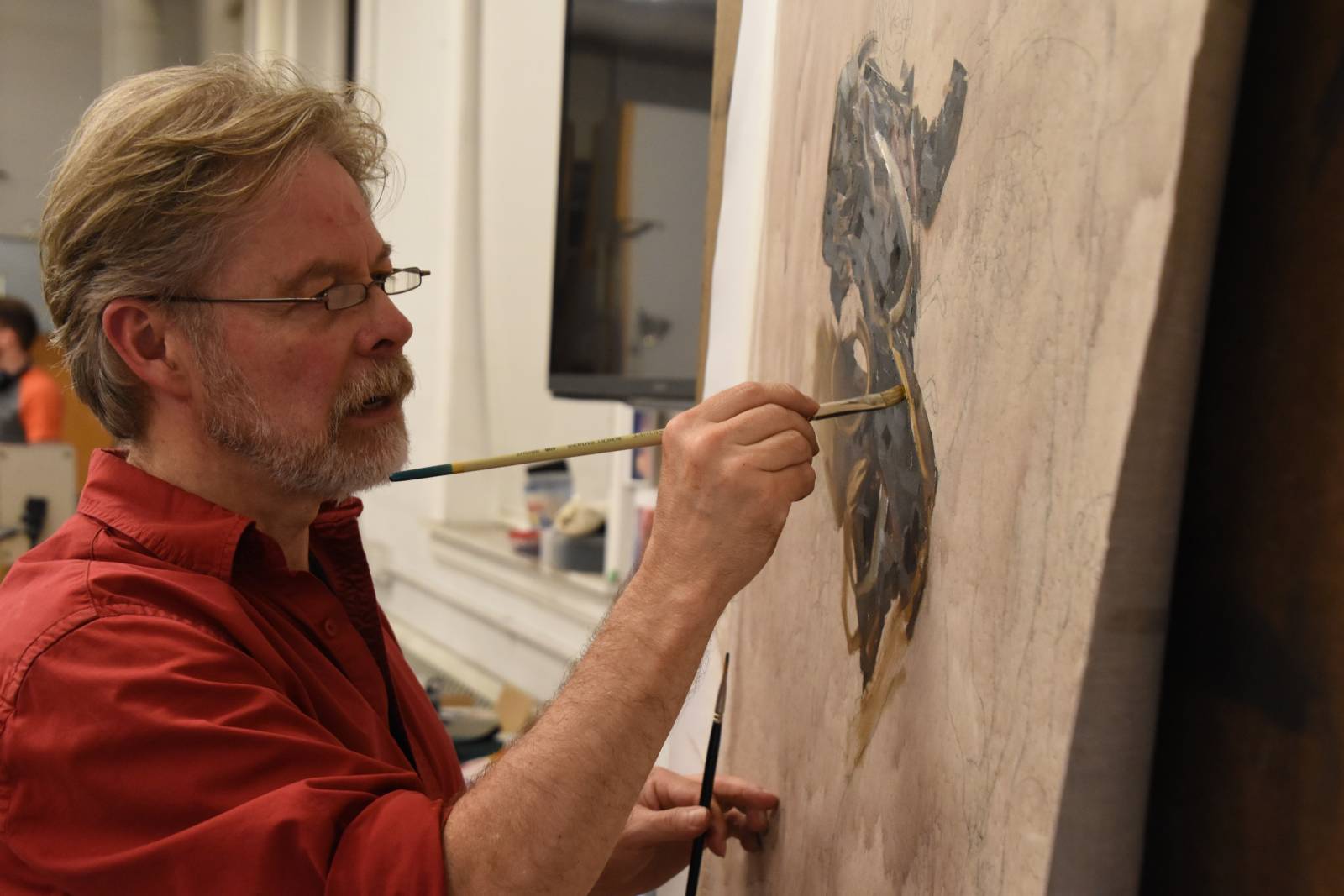
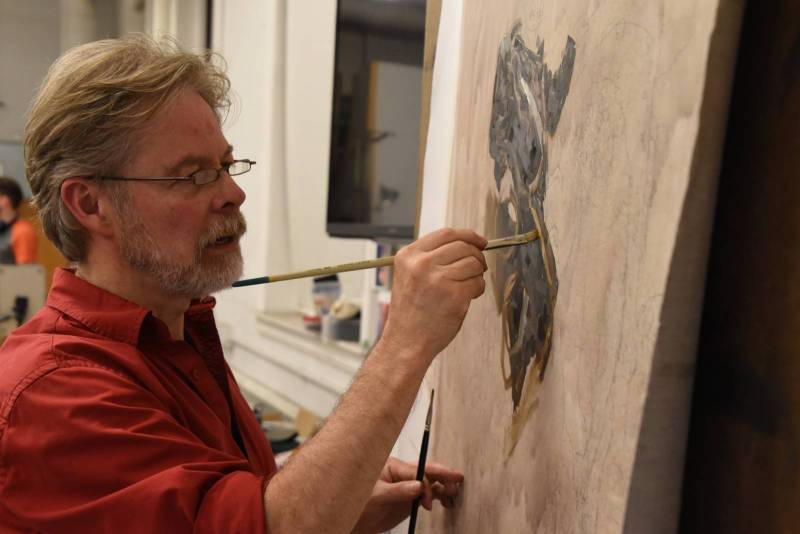
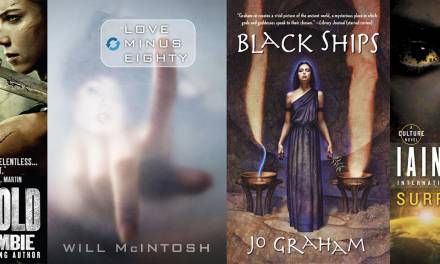
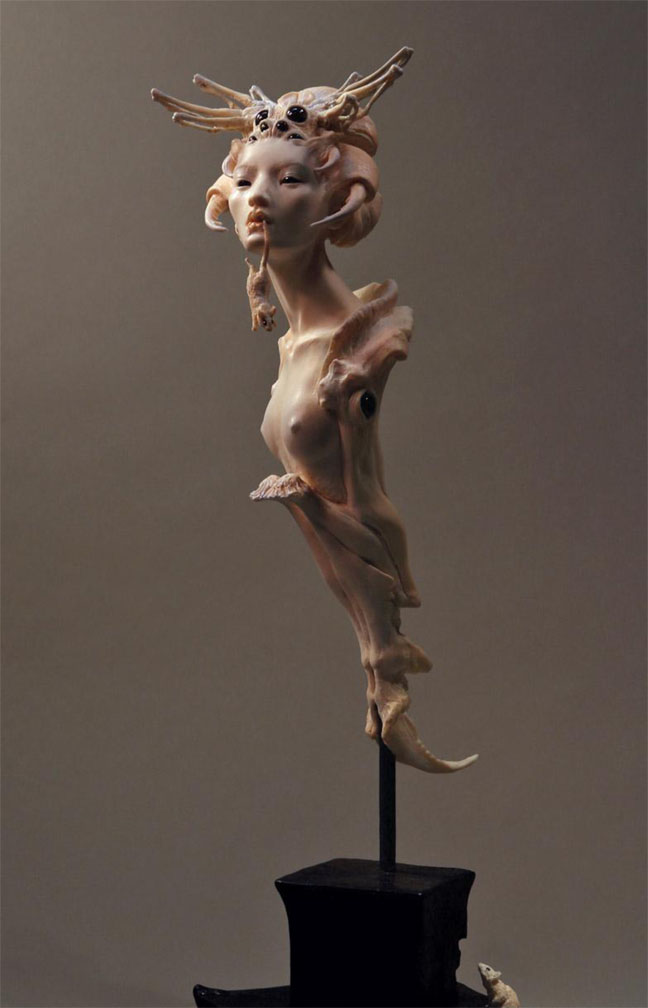
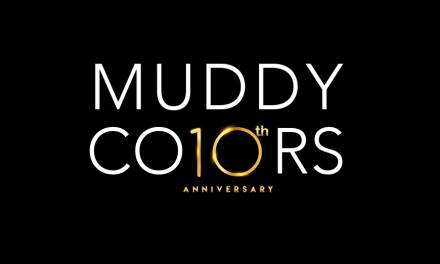
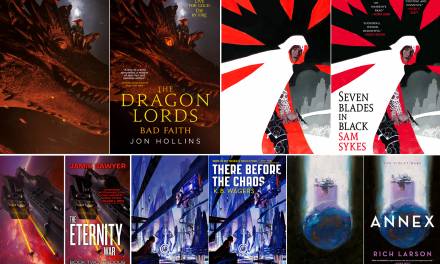

As a Waterloo resident it’s awesome to see you reference Gary Kelley and your work at Hellman. I didn’t know that about you.
Hey Noah…how is ol’ Waterloo? I gotta say, I didn’t want to move there in the least all those years ago, but Hellman Design was a remarkable island in the middle of those cornfields, and the people were amazing. I have life-long friends from there and have missed it everyday since leaving to go freelance. I had to go though, to continue advancing my career, and shaping my dreams of painting.
I so loved it there! And now I think of visiting Iowa sometime soon, to take it all in again. I went through there last year and visited Gary’s studio. He’s still making incredible work!
I might even try doing that bike ride, RAGBRAI…
Waterloo probably looks a little different from when you were living here. It went through an economic downturn in the late seventies and early eighties, but it’s on the rebound. Factories become microbreweries etc. Hellman is still going (50 years now), a buddy of mine works there. I met Gary Kelley last October. I ambushed him one evening and he was kind enough to meet with me week or so later at his studio. We chatted for a couple hours and he reviewed my portfolio. It was very nice of him particularly since he was right in the middle of a time-sensitive project.
It blew my mind when I saw your Waterloo reference. I have a copy of Above the Timberline littered with post-it markers. It’s great stuff. Your style reminds me of Sargent.
If you ever find yourself in Waterloo again feel free to hit me up. I’d love to pick up your bar tab and pick your brain. noah_regan@hotmail.com.
Sounds good, Noah. Wow…50 years for Hellman. An amazing place. Again, I loved it and the people. And what an education. Sometimes I wish I’d bought that house they wanted me to buy so I’d be stuck there longer! LOL!
Hope to stop and see Gary sometime, hopefully next year. In the meantime, put a brief review on Amazon about the book for me? Then we’ll SHARE the bar tab and talk illustration!
Awesome! I’ll leave a review right now. Look forward to chatting with you. Take care.
Wonderful thinking throughout this article. Thanks for the continued inspirations, this one especially!
Best,
Glenda
Wonderful thinking throughout this article. Thanks for the continued inspirations, this one especially!
Best,
GlendaE
Greg, thank you kindly for taking the time to write such a poignant post. I’m actually planning to move next year, and the reasons coincide with what you’re talking about! What “talent hotbeds” in the northeastern United States would you recommend for the untrained-unaccomplished-scared-spitless artist? Specifically one specializing in sci-fi/fantasy illustration?
Well met! This article now appearing in the Washington Post (23 July) seemingly dovetails with yours about building passion. I thought you might find it interesting.
https://www.washingtonpost.com/news/inspired-life/wp/2018/07/23/find-your-passion-thats-bad-advice-scientists-say/?utm_term=.bf19e41328d9